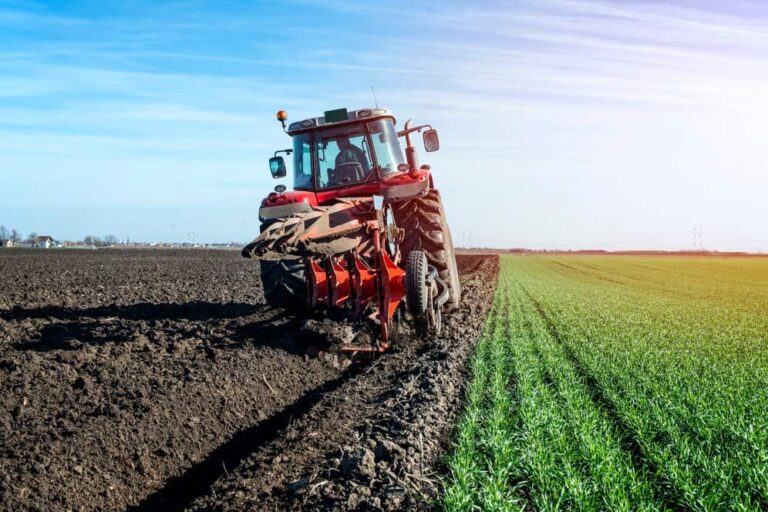Throughout many generations, farmers have dedicated their efforts to optimizing crop production. However, in recent years, the ecological ramifications of intensive farming practices have emerged as a significant issue. Integrated Crop Management (ICM) emerges as a viable solution, advocating for a comprehensive farming strategy that places equal importance on productivity and environmental sustainability. This piece will delve into the core tenets of ICM, illustrating how it cultivates a flourishing agricultural environment conducive to a prosperous future.
The Concept of Integrated Crop Management: A Closer Examination
Integrated Crop Management (ICM) takes a holistic approach towards agriculture, aiming to strike a balance between profitability and sustainability. This innovative farming methodology prioritizes not just the economic gains for the producer, but also the long-term health of the environment. As opposed to traditional farming systems that may rely heavily on resource-intensive inputs, ICM encourages the use of sustainable and eco-friendly farming methodologies that do not excessively deplete resources.
ICM finds its roots in precision agriculture, a farming practice aimed at optimizing input efficiency, leading to simultaneous economic and environmental gains. However, ICM takes a step further by considering all aspects of farm operations instead of concentrating only on individual inputs. This broader perspective allows a focus on strategic planning in farming, covering every angle, from sowing seeds to reaping the harvest.
Over the past decades, the race to boost agricultural productivity has led to the rampant use of input-intensive methods, causing environmental issues such as resource depletion, wildlife loss, landscape degradation, and disruption of ecosystems due to decreased biodiversity. The ICM approach intends to counteract this by fostering a more sustainable balance between farming and the environment.
The core essence of Integrated Crop Management lies in its ability to promote environmentally compatible farming techniques, thereby keeping the ecosystem intact while not compromising on the quantity, quality, or economic viability of farm produce.
What sets ICM apart is its non-prescriptive, customized approach tailored to the specific needs and conditions of each farming operation. Factors like soil type, crop selection, climatic conditions, and farm location play a crucial role in shaping the ICM strategy.
While the specifics may vary across different farms and regions, a few fundamental principles unify all ICM practices. These embody the adaptation of local farming techniques, enhanced by research and technology, to ensure sustainability and resilience. Through this continuous evolution and adaptation, Integrated Crop Management practices aim to revolutionize the world of agriculture.
A Deep Dive into Integral Crop Management: Unraveling Best Practices
Integrated crop management (ICM) empowers agricultural entrepreneurs to undertake profitable farming while concurrently demonstrating responsibility towards the environment and sustainability. These practices help maintain equilibrium between the economical requirements of farming and the environmental necessities of sustainable agriculture.
After establishing the significance of ICM, it’s essential to explore some of the leading practices that supplement this approach. These form the backbone of profitable, sustainable farming and play a crucial role in balancing the ecosystem.
1. Crop Rotation: An Ancient Practice with Modern Benefits
Crop rotation is as old as agriculture itself, revolving around the idea of alternating various types of crops on the same plot of land in different seasons. This practice helps preserve the soil’s nutrient content while also preventing exhaustion due to repeated farming of the same crop.
A diverse crop rotation can boost soil fertility and significantly reduce the onslaught of weeds, pests, and diseases by disrupting their life cycles.
Advantages of Crop Rotation
- Enhances soil quality and structure;
- Preserves soil moisture and prevents loss due to evaporation;
- Increases crop yield in the long run by enhancing soil fertility;
- Provides a natural defense against weeds and pests, reducing reliance on harmful pesticides;
- Reduces need for artificial fertilizers by maintaining soil fertility naturally;
- Increases diversification, providing a buffer against complete crop failure;
- Reduces risk of soil erosion through constant vegetative cover.
Potential Challenges of Crop Rotation
- Requires significant initial investment in diverse seed varieties and possibly additional equipment;
- May require additional machinery or tools for different crop types;
- Requires knowledge and experience regarding compatible crops and optimal rotation sequences;
- Certain crops may be sensitive to unexpected weather changes, posing a risk to yield.
However, the benefits of crop rotation significantly outweigh potential challenges in the long run. Its central role in Integrated Crop Management practices makes it critical in transforming farming into a more environmentally friendly and sustainable industry.
2. Exploring Soil Cultivation: A Crucial Element in Integrated Crop Management
In the grand scheme of Integrated Crop Management (ICM), soil cultivation represents a pivotal part. It primarily involves efforts aimed at augmenting soil structure, fertility, and stability.
When delving deep into soil cultivation, one recognizes the critical importance of farm soil mapping and analysis. Both are processes that provide essential data on the soil’s pH value, the need for lime, and the concentration of beneficial minerals, such as calcium, phosphorus, and potassium.
Part of soil cultivation also incorporates the identification of potential erosion risks. Identifying these risks allows for the implementation of preventative steps, including growing grass between crops or planting specific erosion breaks, to reduce wind or water caused erosion.
The structure of the soil can be significantly influenced by factors including the size of the tractor, tire pressure, and cultivation technique and timing. The practice of rotating between plowing and non-inversion cultivation techniques presents an ideal cultivation strategy.
Non-inversion cultivation employs less energy and induces less damage to the soil compared to plowing. However, plowing is more effective in eliminating weeds. Therefore, a balance between these two techniques offers optimal soil health and productivity.
Benefits of Soil Cultivation
Soil cultivation aids integrated crop management in multiple ways:
- It breaks up compacted soil particles, enhancing soil structure;
- It helps in preventing soil erosion;
- Facilitates the sprouting of new seeds from the soil surface;
- Incorporates air and organic matter into the soil;
- Aids in pest elimination by disrupting their life cycle.
Potential Challenges
While soil cultivation offers numerous benefits, there are potential challenges to keep in mind:
- High risk of soil compaction due to erosion;
- Increased water loss from the soil due to exposure;
- Dormant weed seeds may germinate due to the disturbance.
Although these challenges exist, the benefits of soil cultivation and its role in an integrated crop management system make it a worthwhile practice. It not only aids in maintaining the soil’s health and fertility but also plays a crucial part in preserving the environment by reducing the need for excessive chemical inputs.
3. Harnessing the Power of Crop Nutrition: The Key to Robust ICM
Crop nutrition is an essential aspect of integrated crop management that entails devising a structured fertilization strategy. The process is designed to fulfill the nutritional needs of growing crops, primarily through soil analysis to identify the nutrients present in the soil and those which the soil lacks.
In the world of crop nutrition, fertilizers play a crucial role. They provide both inorganic elements like nitrogen, phosphorus, and potassium, and organic matter in the form of manure to engender a fertile breeding ground for crops.
Benefits of Fertilizer Application in Crop Nutrition
Fertilizers come with a host of benefits that make them an indispensable tool in crop nutrition:
- Easy to transport, store, and apply;
- Allows for multiple crop harvests in a single year, enhancing yield;
- The chemical composition ensures a rapid and positive impact on crops, fulfilling all their nutritional requirements;
- Ensures a high yield by providing necessary macro and micronutrients;
- Water solubility ensures nutrients are easily absorbed by crops;
- Replenishes nutrients consumed by crops, maintaining soil fertility.
Potential Downsides of Fertilizer Usage
Despite their numerous benefits, fertilizers can pose certain challenges or risks when not used judiciously:
- Overuse heightens the risk of groundwater pollution;
- Inorganic fertilizers are synthetic and can lead to toxicity when used in excess;
- Overuse may cause harm to surrounding flora and fauna, leading to a decrease in biodiversity;
- Can be expensive, particularly synthetic varieties, impacting the overall cost of farm operations;
- Overuse can negatively impact beneficial soil microorganisms, leading to long-term decrease in soil fertility.
The use of fertilizers in crop nutrition should be undertaken with caution, taking into account the specific requirements of the soil and crops, and environmental implications. As part of integrated crop management, a balanced approach to fertilizer usage—one that nurtures crops while respecting the environment—promises the best results.
4. Crop Protection: Safeguarding Agricultural Yield in Integrated Crop Management
Crop protection forms the core of Integrated Crop Management (ICM), involving a comprehensive strategy to shield crops from the adversities of weeds, pests, and diseases. It is a proactive approach that primarily focuses on preemptive measures and then transitions to reactive intervention if necessary.
In the realm of crop protection, prevention is often the best cure. A strategic approach such as integrating crop rotation, selecting resistant varieties, and determining the timing of sowing can drastically reduce vulnerabilities.
Another key component of crop protection involves monitoring and surveillance. This includes techniques like weed mapping to identify patterns of weed infestation, and disease and pest forecasting to predict and prepare for potential threats. Deploying diagnostic kits can also help in early detection of crop diseases, enabling timely intervention.
Despite the best preventive measures, crop threats may sometimes persist. In these situations, the use of pesticides and insecticides may be necessary to control and eradicate the problem.
Advantages of Crop Protection
The benefits of a sound crop protection strategy include:
- Protection against pests, diseases, and weeds;
- Potential to enhance the growth and quality of crops;
- Promises higher yields by reducing crop loss;
- Increases farm profitability by ensuring healthy, high-quality crop production.
Potential Downsides
While essential, crop protection strategies aren’t devoid of potential challenges:
- Pesticides and insecticides, if not handled correctly, may harm farm workers’ health;
- Risks of crop contamination if excessive or inappropriate chemicals are used;
- Potential for soil and water pollution if chemical residues aren’t managed prudently.
A well-executed crop protection strategy, in line with ICM principles, can optimize yield while reducing environmental impact. Balancing preventive and responsive measures is the key to sustainable crop protection.
5. Embracing Wildlife and Landscape Management: The Environmental Pillar of Integrated Crop Management
Wildlife and landscape management form the environmental cornerstone of Integrated Crop Management (ICM). This approach recognizes the importance of biodiversity and the interconnectedness of ecosystems, extending beyond the boundaries of crop fields and into areas of the farm untouched by cultivation.
In pursuit of sustainable farming, ICM promotes the preservation and enhancement of natural habitats within farmland, including woodlands, freshwater bodies, and other ‘non-productive’ areas. These spaces serve as habitats for native flora and fauna, contributing to an increase in biodiversity and fostering a healthy ecosystem.
Farmers can contribute to the environment by preserving these areas and taking steps to enhance them. For example, woodland can be conserved and managed effectively through selective logging, which will encourage the growth of a diverse range of tree species and support a rich variety of wildlife.
Similarly, keeping streams and ponds unpolluted promotes the well-being of aquatic life and benefits the broader environment. Such practices not only boost biodiversity but also naturally help control pests, as these habitats often house natural predators.
Advantages of Wildlife and Landscape Management
The benefits of incorporating wildlife and landscape management into farming practices include:
- Helps contain the spread of pests and diseases in crop fields;
- Contributes to biodiversity conservation;
- Improves the aesthetic value of the farm;
- Has a positive impact on the local ecosystem;
- Potentially attracts beneficial insects and pest predators.
Potential Downsides
While beneficial, wildlife and landscape management does come with potential challenges:
- May need significant investment to maintain and enhance habitats;
- Might require expert consultation, which can incur additional costs.
Despite these challenges, the importance of wildlife and landscape management in Integrated Crop Management cannot be overstated. It ensures a balanced and sustainable approach to farming that caters not just to the economic aspect, but also to the essential environmental considerations.
6. Energy Utilization: A Pillar of Sustainable Integrated Crop Management
Energy utilization plays a critical role in Integrated Crop Management (ICM) practices. It marginally impacts every aspect of a farm’s operations, thus, making it an essential part of sustainable farming.
Energy resources encompass the types of energy consumed to carry out farming operations. These resources could be either renewable, like solar or wind energy, or non-renewable, like fossil fuels.
The emphasis of ICM is on implementing the most energy-efficient strategies. To achieve this, it encourages the use of renewable energy alternatives and strives to ensure energy conservation throughout different layers of farming operations. A thorough analysis of fuel consumption and energy use distribution can guide the formulation of efficient energy strategies.
Another aspect of energy resources in ICM is waste management. The primary goal here revolves around the principle of “reduce, reuse, and recycle” to curb waste generation and promote recycling of maximum possible material.
Moreover, ICM also targets reducing farmland pollution caused by the overuse of pesticides, insecticides, and fertilizers.
Advantages of Efficient Energy Utilization
- Environmentally friendly, with little to no emissions;
- Provides a sustainable energy solution;
- Helps in reducing your carbon footprint;
- Contributes to air pollution reduction;
- Aids in combating climate change.
Potential Challenges
While the advantages are evident, it is also crucial to consider the potential challenges:
- Renewable energy can be unreliable due to dependency on weather conditions;
- Requires a significant upfront investment;
- Installation of solar panels or wind turbines, require a considerable amount of space;
- High costs associated with energy storage solutions.
Despite these challenges, a shift towards sustainable and efficient energy utilization remains a central aspect of Integrated Crop Management. It not only brings economic benefits but also contributes significantly to the pursuit of sustainable and eco-friendly farming practices.
7. Organizing, Auditing, and Assessing Integrated Crop Management
Integrated Crop Management (ICM) represents a comprehensive strategy that farmers can adopt to enhance their agricultural practices. It involves a systematic approach that not only focuses on short-term gains but also prioritizes long-term objectives and sustainability. Here’s a detailed look at how organizing, auditing, and assessing ICM can significantly benefit farmers:

- Organizing Practices
- Implementing a structured plan for crop management that aligns with long-term goals;
- Utilizing digital tools and software for better organization and data management;
- Establishing clear protocols for tasks such as planting, irrigation, pest control, and harvesting;
- Encouraging collaboration and communication among farm workers for efficient workflow.
- Auditing Techniques
- Regularly conducting audits to evaluate the effectiveness of farming practices;
- Analyzing data on crop yields, resource usage, pest control measures, and environmental impact;
- Identifying areas of improvement based on audit findings and implementing necessary changes;
- Utilizing advanced technologies like drones and satellite imaging for comprehensive audits.
- Assessing Farm Operations
- Monitoring all levels of farm operations, including soil health, water management, and crop rotation;
- Keeping abreast of the latest farming techniques and innovations through continuous education and training;
- Conducting risk assessments to identify potential challenges and develop mitigation strategies;
- Collaborating with agricultural experts or consultants for in-depth assessments and recommendations.
Benefits of ICM Organizing, Auditing, and Assessing:
- Error Prevention: By keeping track of farming processes, ICM helps detect and rectify mistakes promptly, reducing the risk of future errors;
- Long-term Sustainability: Focusing on long-term objectives ensures sustainable farming practices that benefit both the environment and the farm’s profitability;
- Efficiency Improvement: Through regular audits and assessments, farmers can optimize resource usage, improve crop yields, and enhance overall operational efficiency;
- Risk Mitigation: Identifying potential risks and implementing preventive measures minimizes the impact of unforeseen challenges on farm productivity;
- Continuous Improvement: ICM encourages a culture of continuous learning and improvement, driving innovation and adaptation to changing agricultural landscapes.
Challenges of ICM Organizing, Auditing, and Assessing:
- Time-Consuming: The process of organizing, auditing, and assessing farm practices can be time-intensive, requiring dedicated efforts from farm managers and workers;
- Expertise Requirement: In-depth knowledge and expertise may be necessary, leading to potential costs associated with hiring consultants or agricultural specialists;
- Technological Investment: Adopting digital tools and technologies for organizing and auditing may require initial investment and training for farm personnel.
Conclusion
In conclusion, integrated crop management (ICM) offers a promising path forward for agriculture, balancing productivity with environmental stewardship. By combining traditional wisdom and modern technology, ICM optimizes crop yields while safeguarding the environment and promoting soil health. As we confront challenges like climate change and food security, implementing the seven essential ICM practices becomes not just beneficial but imperative. This holistic approach represents a beacon of hope for sustainable farming, shaping a future where agriculture thrives in harmony with nature.











